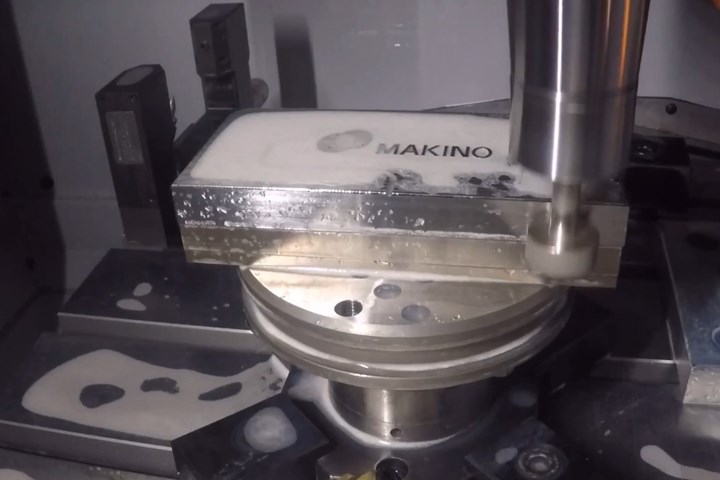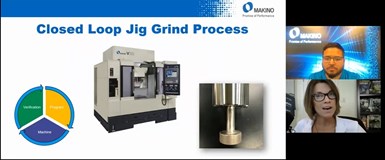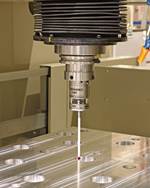
The current method of processing five sides is very labor- and time-intensive and offers variable results. Plus, part inspection only happens when the block is off the machine. To update this process, Makino developed a closed-loop jig grinding and tolerance control process for its V33i and V56i vertical machining centers built for accuracy and repeatability.
There are 5 repeatable steps:
- Program
- Hard mill
- Cleaning
- Inspection
- Grinding
If you focus on designing and building high-cavitation molds, this process and technology are an ideal fit.

Here are some of the attendee questions that were answered during this free webinar:
- Is the spindle oil-lubricated or greased for life?
- What sort of tool do you use for face grinding?
- Will this process work on a D200?
- Is this feature available for the Makino F5 Pro 6?
- Have you done this with a 3+1 axis machine or 4-axis machine?
- What is the largest dimensional envelope you can do?
- Can you cut graphite using this system while still maintaining machine integrity?
- Do you have to calibrate the machine to CMM specs to ensure accurate inspection?
- How much material are you removing with the jig grinding tool?
- What is the process for wheel dressing?
- What is the step over for jig grinding operations?
- Can you do closed-loop machining with complex 3D surfaces?
- Are the various grinding wheels standard purchase items, or are they Makino-produced?
- What are the additional annual maintenance costs associated with the advanced filtering for fine particulates?
- What is the smallest diameter for the grinding wheel?
- For the contour milling operation,- what type of end mills are being used to achieve long tool life with hard milling processing?
- After the chopping sequence going around the part, will that pass just go around the outside surface with the full face of the wheel??
- What CAM systems do you use for mill programming, inspection programming, grinding programming?
- Would the macros for the inspection portion be available?
- Is 30K spindle too low a speed for grinding?
- Is there a limit to the depth of hole vs diameter for jig grinding?
- Can we see this system somewhere physically?
- Have you done this in a five-axis motion as well?
- Is this process standard with the machine or an add-on?
- Are you limited to just square shapes or can you do complex or organic shapes?
- What machine protection are you referring to for the grinding package?
If you want to hear the answers and learn about this closed-loop jig grinding process, click here to watch this archived webinar from Makino for free.
Related Content
-
The Benefits of Hand Scraping
Accuracy and flatness are two benefits of hand scraping that help improve machine loop stiffness, workpiece surface finish and component geometry.
-
Advantages and Disadvantages of Copper and Graphite Electrodes
Both copper and graphite provide approximately the same end result, so it is important for a shop to consider the advantages and disadvantages of each material in order to discover what would work best in their shop floor environment.
-
6 Ways to Optimize High-Feed Milling
High-feed milling can significantly outweigh potential reliability challenges. Consider these six strategies in order to make high-feed milling successful for your business.









.jpg;maxWidth=300;quality=90)

_300x250 3.png;maxWidth=300;quality=90)


